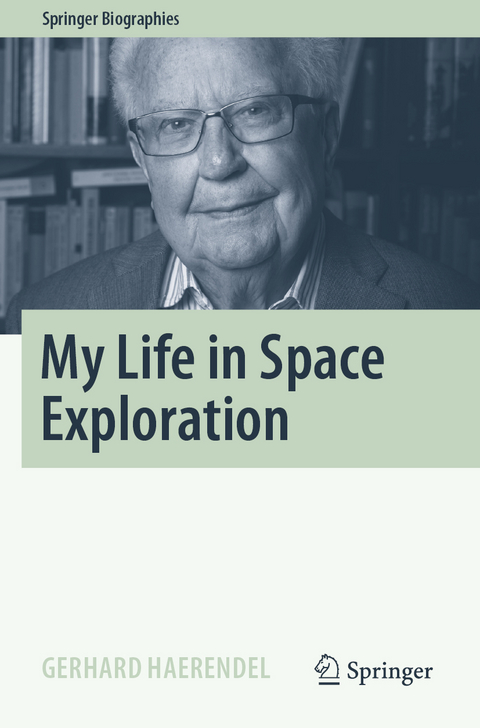
My Life in Space Exploration
Springer International Publishing (Verlag)
978-3-031-10288-2 (ISBN)
This book tells the inside story of Germany's first contributions to space research by experiments with artificial plasma clouds in space. In this autobiography, Gerhard Haerendel, former director at the Max Planck Institute for Extraterrestrial Physics, describes his 60 adventurous years in space research. The narrative of exciting events-covering 40 years of rocket and satellite work-is underpinned with accessible accounts of the actual physical phenomena and processes involved. The reader also learns about how the goals set by a visionary astrophysicist eventually led to one of Germany's first major contributions to space research by the creation of artificial comets in the solar wind.
Haerendel's efforts also led to two further satellite programs, one in partnership with Sweden, focusing on the aurora borealis, the other, a national German endeavor, to explore the outer border of the magnetosphere. A further interesting chapter concerns his engagement in the evaluation and restructuring of eastern German Academy institutes after reunification.All readers interested in space research and its history will enjoy sharing the fascinating experiences and dramatic events that accompany the story throughout, even some spectacular failures relating to rocket campaigns.
lt;p>After a humanistic school education, Gerhard Haerendel chose
to study physics with the intention of becoming a researcher in astrophysics. Commencingas graduate student with Ludwig Biermann, the leading astrophysicist of thattime, he was soon "handed over" to Arnulf Schlüter, Germany's foremostplasma theorist, as thesis advisor. Shortly afterward, the Max PlanckInstitute for Physics and Astrophysics in Munich under Werner Heisenberg set upa research group for space research under Reimar Lüst, who hired Haerendel asyoung theorist supporting the experimental program consisting of seedingvisible barium plasma clouds in space. In 1969, he was appointed leader of this experimental program and, three years later, became co-director of the Max Planck Institute for extraterrestrial Physics in Garching/Germany.He led this program from simple sounding rocket experiments to international projects involving combined active and diagnostic payloads focusing on specific phenomena such as plasma instabilitieslike equatorial spread F, magnetosphere-ionosphere coupling, auroralacceleration, and finally to the ultimate goal of creating two artificialcomets in the solar wind, so far the only experiments ever of this kind. The latter step of this program was enabled by his group having acquired the competence to build entire satellite payloads.This led naturally into participation in the global exploration of themagnetosphere and its interaction with the solar wind. The missions were conceived and carried outas national programs under the control of the his institute, however withstrong international cooperation and support by NASA, ESA, and the SwedishSpace Corporation. He was strongly involved in the interpretation ofthe data obtained and the development of pertinent theories.He played a role in the creation of three majorresearch institutions, the European Incoherent Scatter Radar (EISCAT), theSkinakas Observatory on the Island of Crete, and the International UniversityBremen (IUB), now Jacobs University. He was involved in the evaluation ofEastern German Academy institutes in geo-astrophysics and, as a follow-up,created an external laboratory of his Max Planck Institute in Berlin for aduration of five years. He served as chair or member of various advisorycommittees including the European Space Science Committee (ESSC) of theEuropean Science Foundation and, for eight years, as president of the Committeeon Space Research (COSPAR). After retiring from his last job as the foundingdean of the School of Engineering and Science of the IUB, he devoted his timeto developing theories of geomagnetic processes, in particular the formation ofauroral arcs and the transfer of energy from the geomagnetic tail to themagnetosphere, and of various phenomena on the active sun.1. My way into physics.- 2. The assignment.- 3. Diverse paths.- 4. Years of harvest.- 5. Reflection.
| Erscheinungsdatum | 04.10.2023 |
|---|---|
| Reihe/Serie | Springer Biographies |
| Zusatzinfo | XIV, 227 p. 112 illus., 57 illus. in color. |
| Verlagsort | Cham |
| Sprache | englisch |
| Maße | 155 x 235 mm |
| Gewicht | 424 g |
| Themenwelt | Naturwissenschaften ► Physik / Astronomie ► Astronomie / Astrophysik |
| Technik ► Luft- / Raumfahrttechnik | |
| Schlagworte | Auroral acceleration process in conjunction with solar flares • Auroral particle acceleration by magnetic fractures • Critical ionization velocity effect in space • Energy input to magnetosphere by magnetic reconnection • First astronomical observatory in Crete • First German contribution to space exploration • Fundamental plasma physical processes • Germany's first private research university in Bremen • Germany’s first private research university in Bremen • Germany's first space collaboration with Soviet Union • Germany’s first space collaboration with Soviet Union • Magnetic flux tubes as rigid rods • Man-made plasma comets in solar wind • Plasma droplets in solar prominences |
| ISBN-10 | 3-031-10288-6 / 3031102886 |
| ISBN-13 | 978-3-031-10288-2 / 9783031102882 |
| Zustand | Neuware |
| Haben Sie eine Frage zum Produkt? |
aus dem Bereich


